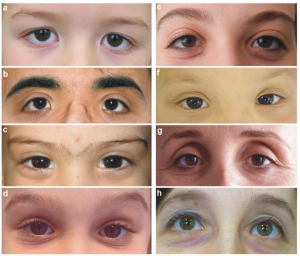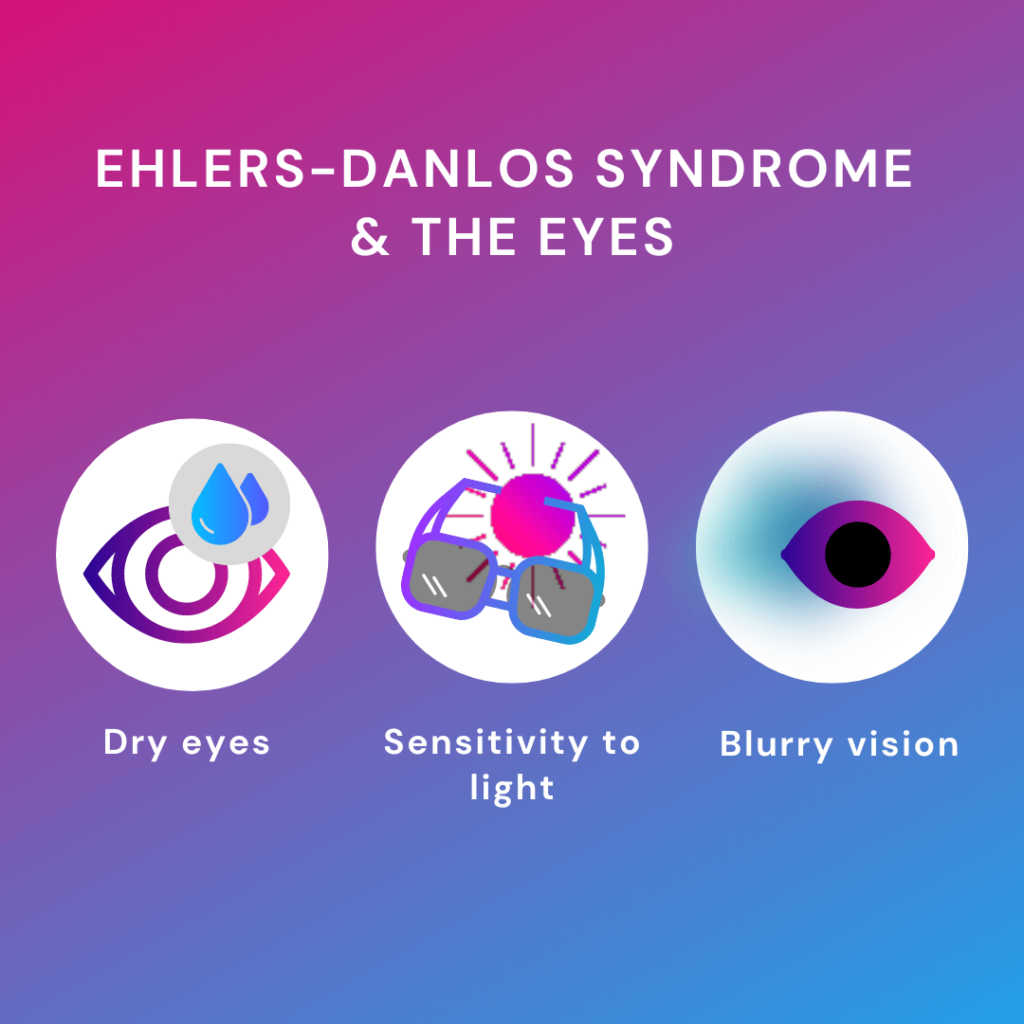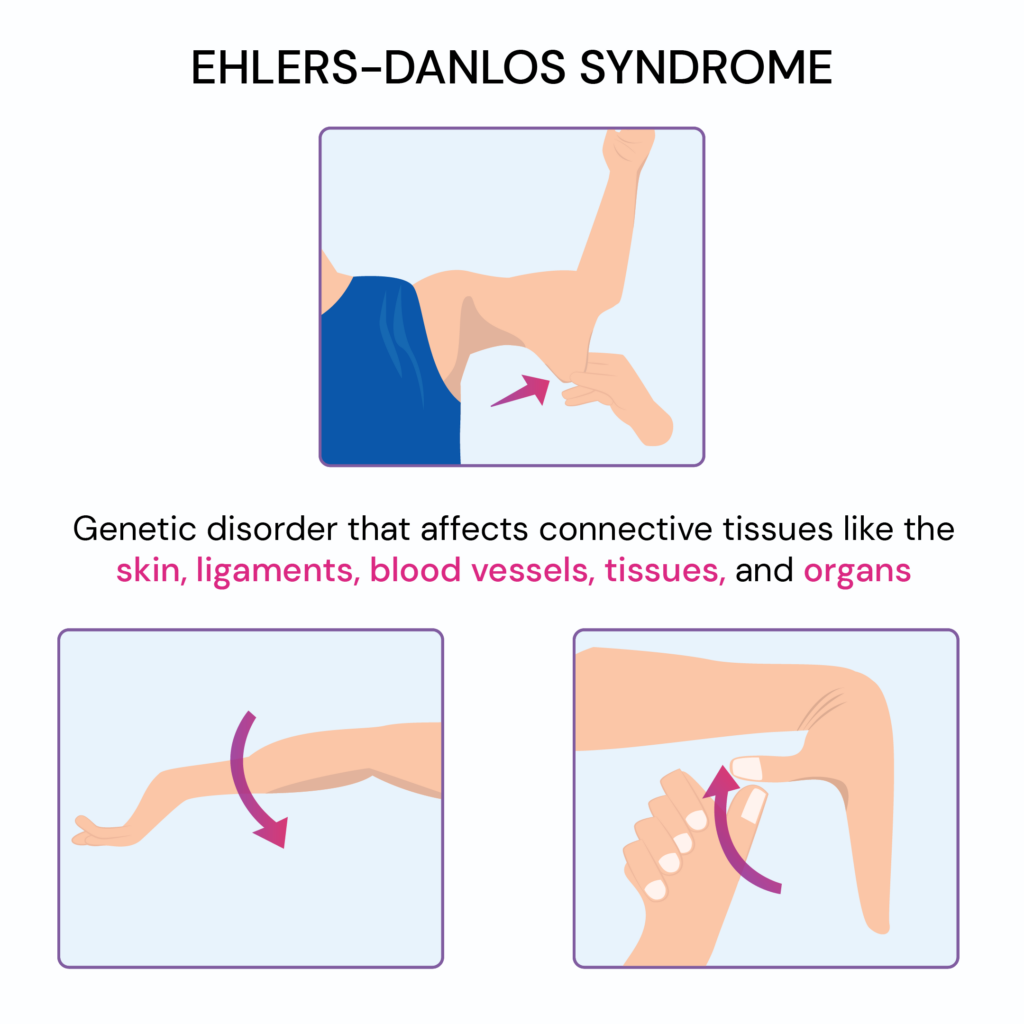Many people may be unaware of its impact on the eyes regarding Ehlers-Danlos Syndrome (EDS), a rare genetic disorder affecting the body's connective tissues.
However, eye problems can be severe and sometimes life-changing for EDS patients. From vision loss to dislocated lenses, let's take a closer look at the link between EDS and the eyes.
Introduction: What Is Ehlers-Danlos Syndrome?
EDS is a group of heritable disorders that affect connective tissues like the skin, ligaments, bones, blood vessels, and other tissues and organs.
There are 13 types of EDS, characterized by the following:
- Tissue fragility
- Hypermobility
- Hyperextensibility
- Excessive bruising
In some people, ocular manifestations of EDS have been identified.
Basics Of Ehlers Danlos Syndrome
1 in 5000 people is affected by EDS, and the hypermobile and classical forms of the condition are more common.
Causes of Ehler-Danlos Syndrome
Abnormal changes (called mutations) in at least 20 genes have been identified to cause EDS.
Mutations in the COL5A1, COL5A2, and rarely COL1A1 cause the classical type of EDS.
The genes associated with EDS, such as COL1A1, COL1A2, COL3A1, COL5A1, and COL5A2, provide instructions for making different types of collagen.
Mutations in these genes, therefore, disrupt the production, processing, and assembly of normal collagen.
As a result, the individual has weakened connective tissues, which is characteristic of EDS.
Inheritance of Ehler-Danlos Syndrome
The inheritance pattern of EDS varies based on the type.
The classical, vascular, arthrochalasia, and periodontal EDS have an autosomal dominant inheritance pattern.
This means having just one gene copy in each cell is sufficient to cause the condition.
Other forms likely show an autosomal recessive inheritance pattern, meaning both copies of the defective gene are needed to cause the condition.
Visual Checkups For Those With EDS
An ophthalmologist must evaluate people with EDS to detect any eye abnormalities.
The ophthalmologist will usually perform a dilated eye exam to increase pupil size.
This enables them to examine the structures at the back of the eye, including the retina, blood vessels, and the optic nerve, for abnormalities.
If retinal abnormalities are detected, the individual should undergo eye checkups every three to six months.
Frequent eye examinations may be required if the individual sees floating structures or spots that interfere with their vision.
Ehlers-Danlos Syndrome Eyes

Individuals with kyphoscoliotic EDS tend to have eye and vision problems that can be rectified using corrective glasses.
How Does Ehlers-Danlos Affect The Eyes?
Some studies indicate that vision problems may also be found across other types of EDS.
In EDS, collagen production is disrupted, resulting in abnormal collagen fibrils and improper assembly.
Mutations primarily cause this in the COL5A1 and COL5A2 genes.
Two other genes, ZNF469 and PRMD5, have been implicated in brittle cornea syndrome, a condition characterized by progressive cornea thinning.
Common vision problem in EDS: A Study
A study compared healthy volunteers with 50 individuals with classical EDS.
The analysis revealed structural changes in the corneas of EDS patients, resulting in symptoms like:
- Dry eyes
- Sensitivity to light
- Blurry vision
In rare cases, the sclera of EDS patients may turn blue.
Why Is Collagen in the Eyes Important?
The sclera, or the white of the eye, and the cornea (which covers the eye) comprise collagen.
Some functions of collagen in the eyes are
- Providing transparency and refraction of the cornea, lens, and vitreous body
- Providing structural strength for the eyes
While collagen has an inherent capacity to stretch and regain shape, in people with EDS, collagen loses this elasticity.
What Eye Conditions Can Compromised Collagen Cause?
Abnormal collagen production can result in many eye conditions and vision problems.
While some symptoms, like dry eyes, are manageable, others may require additional treatment.
A few severe eye conditions resulting from compromised collagen include
- Retinal detachment: The abnormal collagen causes the eye to lengthen, which may lead to retinal detachment.
- Glaucoma: Damage to the optic nerve leads to increased eye pressure and, eventually, vision loss.
- Keratoconus: Due to abnormal collagen, the cornea curves, resulting in distorted images. This condition is called keratoconus.
- Macular degeneration is an age-related disorder affecting the macula, the retina's center.
When retinal blood vessels leak or break, it is called wet macular degeneration.
It is called dry macular degeneration, when the retina deteriorates or wears out.
Both wet and dry macular degeneration leads to vision loss.
- Conjunctival degeneration: The conjunctiva (the part that covers the sclera) loosens or sags due to improper collagen.
This gives rise to a sensation of a foreign substance in the eye and pain.
What Are The Ocular Signs Of Ehlers Danlos Syndrome?
A few common ocular signs of EDS include:
- Strabismus
- Amblyopia
- Irregular astigmatism
- High refractive error
- Convergence insufficiency
- Dry eyes
Can Ehlers-Danlos Syndrome Cause Dry Eyes?
Due to corneal changes in EDS, most patients with this condition complain of dry eyes.
How Are Eye Problems In Ehlers-Danlos Treated?
Treatment for eye problems in people with EDS is similar to those with similar vision problems without EDS.
The ophthalmologist will treat structural issues with lens replacement, corneal replacement, or other surgical techniques wherever required.
However, surgery may not always be the first treatment choice for people with EDS.
Artificial tears or steroid eye drops may be prescribed to relieve dry eye symptoms.
Treatment and recovery times may be longer for people with EDS.
Summary
- Ehler-Danlos Syndrome (EDS) is a group of inherited disorders that affect connective tissues in the body.
- Mutations in at least 20 genes have been identified to cause EDS, including COL1A1, COL1A2, COL3A1, COL5A1, and COL5A2.
- The mutations disrupt normal collagen production, processing, and assembly, causing abnormal connective tissue seen in EDS.
- Vision problems may also be found across other types of EDS, with the most common symptoms being dry eyes, sensitivity to light, and blurry vision.
- Eye problems in EDS are treated similarly to non-EDS-related vision-related problems, using corrective glasses, eye drops, and surgery (if needed).






